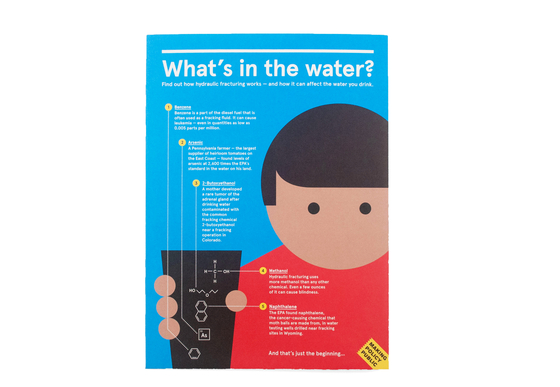“Fracking.” It’s one of those issues that everyone seems to be talking about. Maybe you already know it’s a way for gas companies to get natural gas from underground rocks upstate. But how does it work? Why does it matter now? And should people in cities be concerned about it?
The fracking process forces chemicals, water, and sand under massive pressure into underground cracks. The cracks expand and release the gas, which is then collected back at the surface and used as a source of energy. Fracking is already being used in 34 states, and in those states, fracking chemicals, gas, and other substances have contaminated drinking water supplies and harmed human, animal, and environmental health. And now fracking is coming to the Marcellus Shale – a rock layer that stretches 600 miles under six states, and is the home to the water supply of more than 15 million people – from New York City to Delaware.
CUP teamed up with Damascus Citizens for Sustainability, who have been involved in increasing awareness about fracking since 2008, and the design studio Papercut to create What’s In the Water?, a fold-out poster that breaks down how fracking works, and shows the risks it poses to the drinking water, food, and environment of the most populous region of the country.
The project is targeted at increasing awareness of the issue in urban areas that could be impacted. DCS has already distributed thousands of copies of the poster to organizing groups in cities all over New York and Pennsylvania who are using them in their own advocacy efforts.
Through the support of the Sappi Ideas That Matter program, we were able to create an ad posted throughout the New York subway system in September of 2012, reaching millions of New Yorkers on their way to work.
Get your copy of the poster here.
What’s in the water? received a Professional Notable citation from the Core77 Design Awards in 2013.










